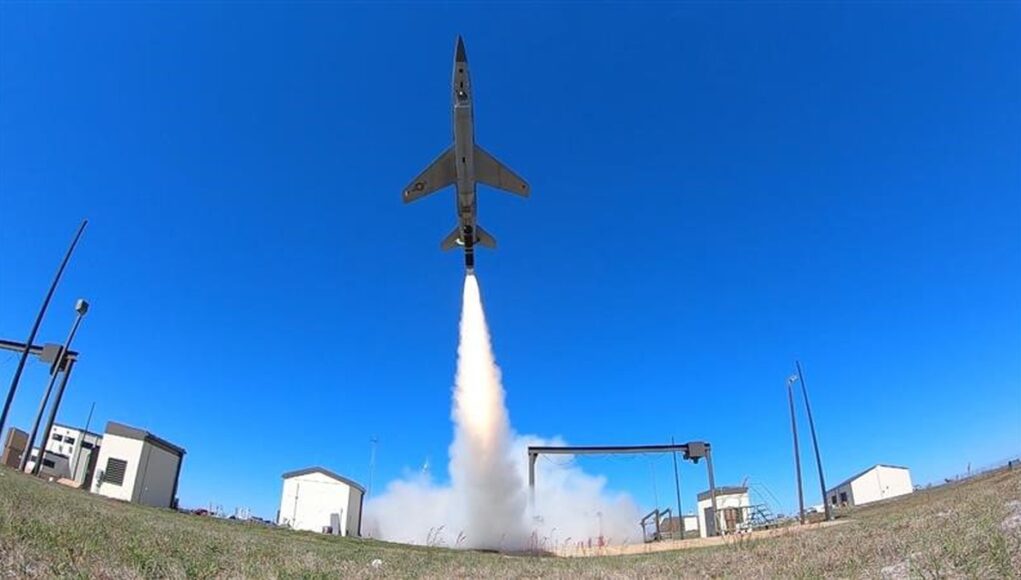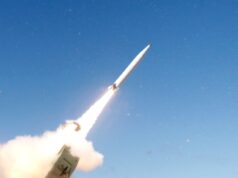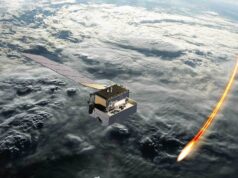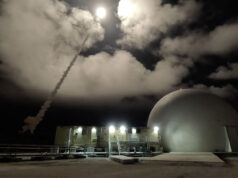Skyborg conducted a 2 hour and 10 minute flight test aboard a Kratos UTAP-22 tactical unmanned vehicle at Tyndall Air Force Base, Florida.
Termed Milestone 1 of the Autonomous Attritable Aircraft Experimentation, or AAAx, campaign, the ACS performed a series of foundational behaviors necessary to characterize safe system operation.
“The ACS demonstrated basic aviation capabilities and responded to navigational commands, while reacting to geo-fences, adhering to aircraft flight envelopes, and demonstrating coordinated maneuvering. It was monitored from both airborne and ground command and control stations.
The Skyborg Vanguard team is a unique relationship that pairs Brig. Gen. Dale White, program executive officer for fighters and advanced aircraft as the Skyborg PEO, and Brig. Gen. Heather Pringle, Air Force Research Laboratory commander, as the Skyborg technology executive officers. The 96th Test Wing, under the leadership of Brig. Gen. Scott Cain, serves as the executing agent for these test missions.”
Milestone 1 is the first step in testing the ACS and begins a sequence of experimentation events planned over the next several months. Follow-on events will demonstrate direct manned and unmanned teaming between aircraft and multiple ACS-controlled unmanned aircraft.
The aim of the Skyborg programme is to integrate full-mission autonomy with low-cost, attritable unmanned aircraft to enable manned-unmanned teaming.











This is the USAF version of LANCA.
“but which is better” will be the title of YouTube videos from so called “military analysts” who only care about size and stats like as if it was top trumps.
Looks like an old buzz bomb from WWII.
I was thinking pretty much the same though more the various rocket/ram jet cruise missile projects from the 1950s. For a few seconds my brain literally thought that was an image from that time before the relevance of the actual project sunk in to restore some equilibrium, though I only know the basics of Skyborg anyway. True Back to the Future stuff.
A bit like Elon’s rockets look rather like 1950’s Sci Fi.
Or rather the stuff that was worked out then was fundamentally right but the tech didn’t quite exist to make it fully functional.
It will be interested to see what Reaction Engines input into this area ends up being. They hold the key to unlocking a lot of the real world hypersonics. I suspect they get a lot of applications from Chinese students to work with Reaction Engines academic partners!!
Very true someone even quipped how technology has finally caught up with 50s scifi in relation to starship though it’s not quite as curvy as they liked to imagine it. Take a look at Lockheed Martins Martian lander proposal that really is beautifully retro.
Done a lot reading on Reaction Engines and Hotol fascinating stuff though the latter is no more than a use case example to encourage others to produce designs really sadly. The engine is the real deal though with great potential in various shorter term exploits though space planes are going to struggle against the cost projections of Space X. The exception in the foreseeable from what I see is something around Dreamchaser which has part proved itself already is considered reasonably practical using existing generally mature technology and concepts and is continuing privately at least to be gradually developed in the hope of official or commercial input eventually. If it can take advantage of (semi)reusable boosters it’s horizontal landing ability (like hotalesque concepts) seems to me rather more safe for humans than the Starship’s impressive but scary landing trickery. The two concepts could well work together I reckon.
Blue Origin who’s vertical landing is both simpler and long perfected still I note bring its passengers home in a separate capsule though the Shepard has no orbital ability, so Space X is being very optimistic in making its much more complex orbital rocket achieve such human landings 99%+ safe. But fascinating to follow their efforts.
Seem like a 60’s Ryan Firebee